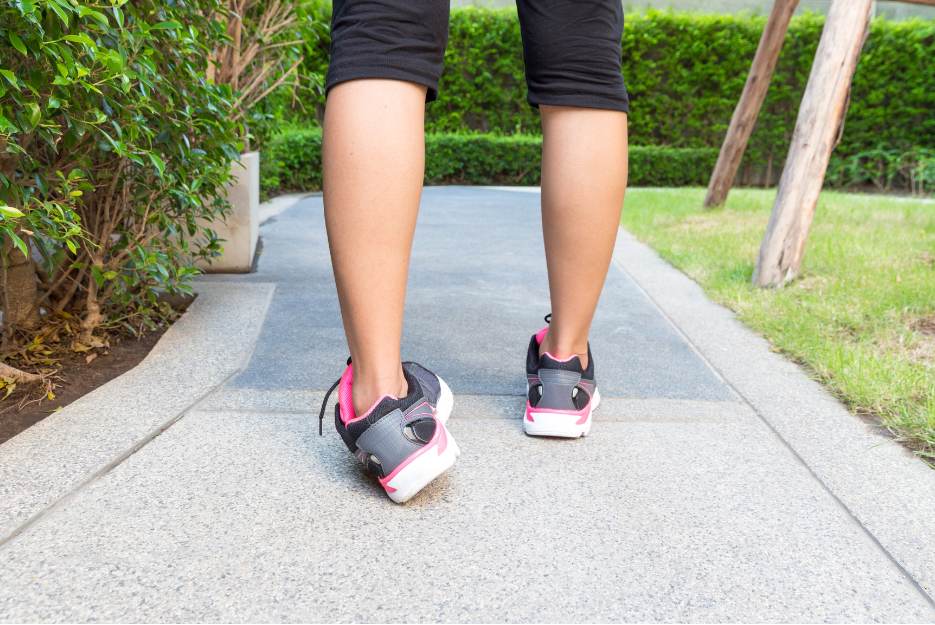Ankle Sprains
Background On Ankle Sprains
Ankle sprains are a common injury that can affect anyone at any age. They occur when the ligaments that connect the bones in the ankle joint are damaged. These ligaments help stabilize and support the ankle.
The most common type of ankle sprain is an inversion sprain, which happens when the foot twists inward, causing the ankle to roll outward. This type of sprain typically affects the ligaments on the outside of the ankle, including the:
- Calcaneofibular ligament
- Anterior talofibular ligament
- Posterior talofibular ligament
Ankle sprains can occur during activities that cause the ankle to roll, such as losing balance, walking on uneven surfaces, landing awkwardly during sports, or making sudden turns.

Table of Contents
How Do You Know If You Sprained Your Ankle?
How To Treat A Sprained Ankle
Visit Us Today
Hope Island
Phone: 07 5510 9222
Located within Hope Island Marketplace Medical & Skin Clinic, 99-103 Broadwater Ave Hope Island QLD 4212
Jimboomba
Phone: 07 5546 9766
Located Within Jimboomba Medical Centre, Unit 1/69 Cerina Cct, Jimboomba QLD 4280
Beenleigh
Phone: 07 3287 2224
Located Within Beenleigh Mall Medical Centre, Shop24A, 40/68 Main Street, Beenleigh QLD 4207
Eagleby
Phone: 07 2889 1666
Located Within Eagleby Family Practice, 5/120 River Hills Rd, Eagleby QLD 4207
Harristown
Phone: 07 4635 6111
Located Within Toowoomba Medical Centre, 146 Drayton Road, Harristown QLD 4350
Marsden
Phone: 07 3067 2370
Located Within Marsden Family Doctors, Shop 28/55-77 Chambers Flat Rd, Marsden QLD 4132
Keperra
Phone: 07 3355 4082
Located Within Keperra Medical Clinic, 14 Dallas Parade Keperra QLD 4054
Coomera
Phone: 07 5573 5663
Located Within Doctors @ Coomera Central, Shop 6, 21 Coomera Grand Drive, Upper Coomera, QLD 4209
Newtown
Phone: 07 4633 8700
Located Within Ochre Medical Centre Wyalla, Shop 20, 238 Taylor Street, Newtown QLD 4350
What Does A Sprained Ankle Look Like?
After spraining your ankle, it is common for the area to swell and potentially become red or bruised. While the swelling should go down over time, the bruising may persist longer. If there is no bruising, the ankle may appear normal, but it can still be very painful to walk on.
How Long Does A Sprained Ankle Take To Heal?
The recovery time for an ankle sprain largely depends on the severity of the injury and other factors, such as how quickly you begin proper care and treatment.
- A mild ankle sprain typically takes about 3 weeks to heal (anywhere between 2 to 5 weeks).
- A moderate sprain may take around 4 weeks to recover (between 3 to 6 weeks).
- A severe sprain can take up to 6 months to heal (anywhere between 2 to 6 months).
The earlier you begin caring for your ankle and promoting healing, the quicker your recovery will be.
Ankle Sprains FAQ's
How long does a sprained ankle stay swollen?
Can walking on a sprained ankle make it worse?
Resuming walking too soon after an ankle sprain can lead to further complications. When you sprain your ankle, one or more ligaments that help keep the ankle stable are damaged. These ligaments become weakened and can’t perform their function as effectively. As a result, you may be more prone to re-injuring your ankle or causing additional damage to the already injured ligaments.
However, research suggests that staying mobile during recovery—bearing weight on the ankle when it’s safe and comfortable—can actually help speed up the healing process. This approach, rather than complete immobilisation with a boot or crutches, has been shown to promote recovery.
Can a sprain ankle cause fever?
Can you put heat on a sprained ankle?
Can you play sports on a sprained ankle?
We strongly advise against playing sports on a sprained ankle, as doing so may worsen the injury, cause a re-sprain, or lead to other injuries as you compensate for the pain in your ankle. It’s important to allow your ankle time to heal properly before returning to physical activity.
Do I need an X-ray for a sprained ankle?
To evaluate the severity of an ankle sprain and determine how many ligaments have been affected, ultrasound can be used. This imaging technique helps assess the damage to the soft tissues, providing a clearer picture of the injury.
Does a sprained ankle bruise?
Yes, a sprained ankle can bruise, but it doesn’t always happen. Bruising occurs when blood vessels beneath the skin are damaged due to the injury. While it can be painful, bruising is typically not a sign of anything more serious.
How long do you keep ice on a sprained ankle?
Enquire Now
Not The Condition You Are Looking For?
Find out more about the conditions we treat by clicking below.
